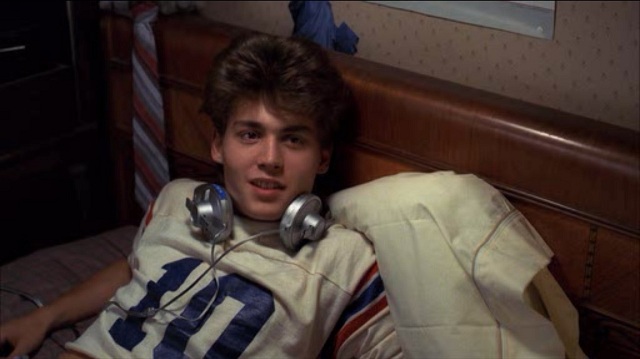Filtered By: Lifestyle
Lifestyle
Throwback Theater: Sleepless nights with ‘A Nightmare On Elm Street’
Throwback Theater is a look back at movies released in 1984 (30 years ago) that have become beloved modern classics.
While Hitchcock’s seminal “Psycho” may have introduced audiences to what we now recognize as the modern slasher film in 1960, it wasn’t until the release of John Carpenter’s “Halloween” in 1978 that the floodgates opened for the genre in earnest. From the late 70s to the mid-80s, blade-wielding mass murderers of every conceivable shape and size were unleashed on cinema screens around the world in rapid succession, and audiences just couldn’t get enough.
Arriving amid that wave, in 1984, was director Wes Craven’s “A Nightmare on Elm Street,” which added a supernatural twist to the by-then familiar narrative of an unkillable killer slaughtering hapless teenagers. Stealing the spotlight from the largely interchangeable leads was villain Freddy Krueger (played by Robert Englund in every appearance until 2003), who attacked his victims from within their dreams as they slept.
With that simple twist, Craven took something everyone could relate to (the need for rest), made it terrifying, and, in the process, made Krueger a horror icon. To date, the “A Nightmare on Elm Street” franchise has grossed $455 million across nine films, a short-lived anthology TV series and no shortage of merchandise.

Tina (Amanda Wyss) is stalked in her dreams by Freddy Krueger (Robert Englund), a child murderer burned to death for his crimes. Photos courtesy of New Line Cinema
As Tina tries to figure out what’s going on, her initially skeptical friends begin experiencing nightmares of their own, with the only common element being the shadowy figure with the bladed glove. When Tina turns up dead (according to slasher film survival rules, anyone who has sex is a goner) and her boyfriend Rod is accused of the murder, it falls to their friend Nancy (Heather Langenkamp) and her boyfriend Glen (an impossibly young Johnny Depp, in his first film role!) to find out what’s really going on. As the bodies start piling up and the teens discover shocking revelations about their parents’ past, the dream world and the real world collide when Nancy decides to face her fears once and for all.
Unlike the self-aware slasher flicks of the 90s that Craven himself would introduce with “New Nightmare” (1994) and “Scream” (1996), the original “A Nightmare on Elm Street” is played pretty much straight, creating a palpable sense of dread that later entries were never quite able to approximate. As the film progresses, with Craven ramping up the scares and tension to almost-unbearable levels, finally seeing Krueger in all his hideously-disfigured, sweater-wearing, blade-gloved, glory is almost cathartic (in the strangest of ways).
As with any slasher film, the proof in the pudding is in the villain’s kills, and “Nightmare” has some of the series’ most memorable. As opposed to the run-of-the-mill mute killers reaching for the nearest sharp/pointy object stab/hack and/or impale their victims with, Kreuger had a sense of style, combining the best elements of a traditional slasher with bits lifted right out of a traditional horror film. At any rate, you won’t be able to look at your bed (or a telephone, or a staircase, for that matter) the same way again.
Krueger here takes a sadistic pleasure in stalking his victims, exuding a menace far removed from the wisecracking caricature the character morphed into as his popularity grew. Indeed, the sheer psychological torment that Kruger puts his increasingly sleep-deprived victims through before finishing them off is worthy of praise for just how terrifying (and exhausting) a concept the inability to rest would actually be. As such, when Nancy decides that enough is enough, we’re with her every step of the way.

'Nightmare' featured an impossibly young Johnny Depp in his first film appearance.
While the “Nightmare” remake did make a profit, negative audience and critical response meant that no sequel has been announced, as of this writing, and it’s not entirely difficult to see why. The main strike against any remake is the inherent need to strike a balance between what an audience wants to see from a familiar title (which is what got them into the theater in the first place), while showing them something new that justifies the do-over in the first place. Stray too far, and you risk offending the fans. Stick too close, and you run the risk of being called a copycat.
In the case of the “Nightmare” remake, too much was changed that didn’t need to be, and areas where the original could have been improved upon, such as in the characterization of the hapless teens, was pretty much ignored. With nothing improved, and pretty much everything else a step down from what came before, the thought, “What was the point?” inevitably comes to mind.
Of course, while one would prefer that only bad films got remade (as good films), the easy marketing lure of built-in name recognition and/or nostalgia for classic titles is often too good a cash grab for any studio to pass up. Indeed, for every remake that turns out to be an improvement (“Ocean’s 11”) or even a Best Picture-nominee (“True Grit”), there’s a “Footloose” just waiting to happen.
In the case of Wes Craven’s “The Nightmare on Elm Street”, you just can’t go wrong with the original. — BM, GMA News
More Videos
Most Popular



